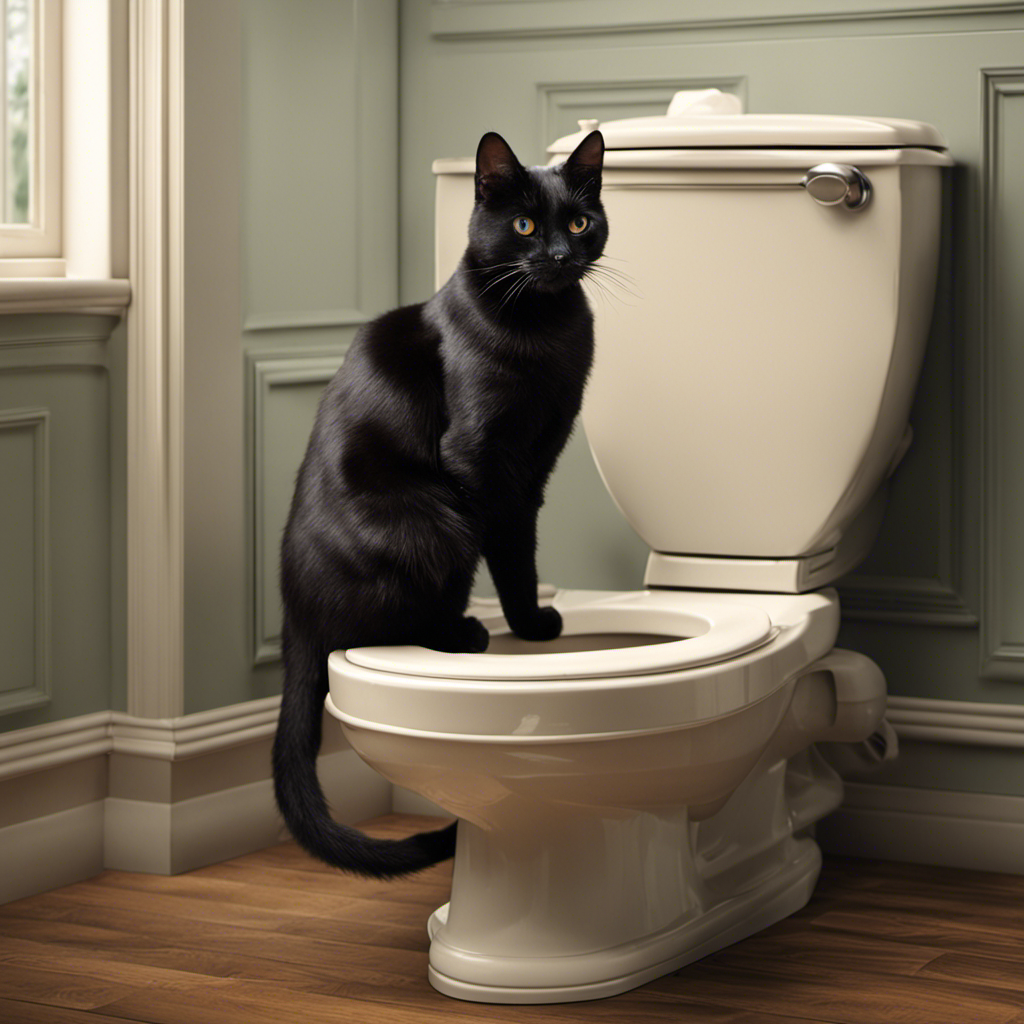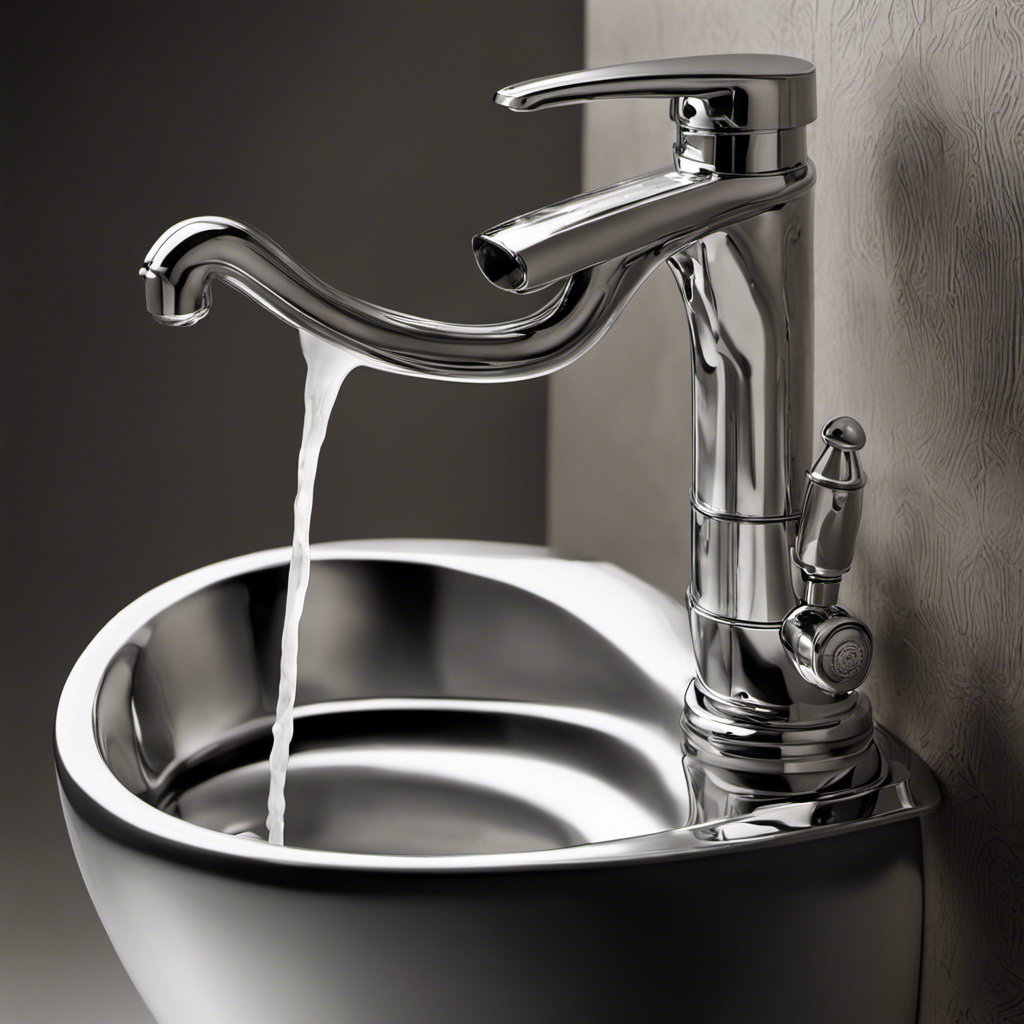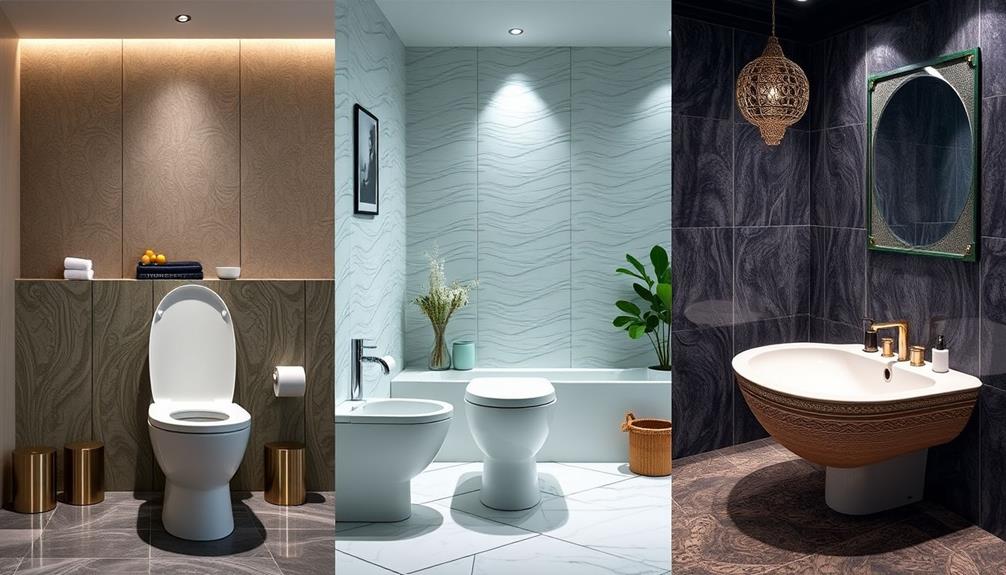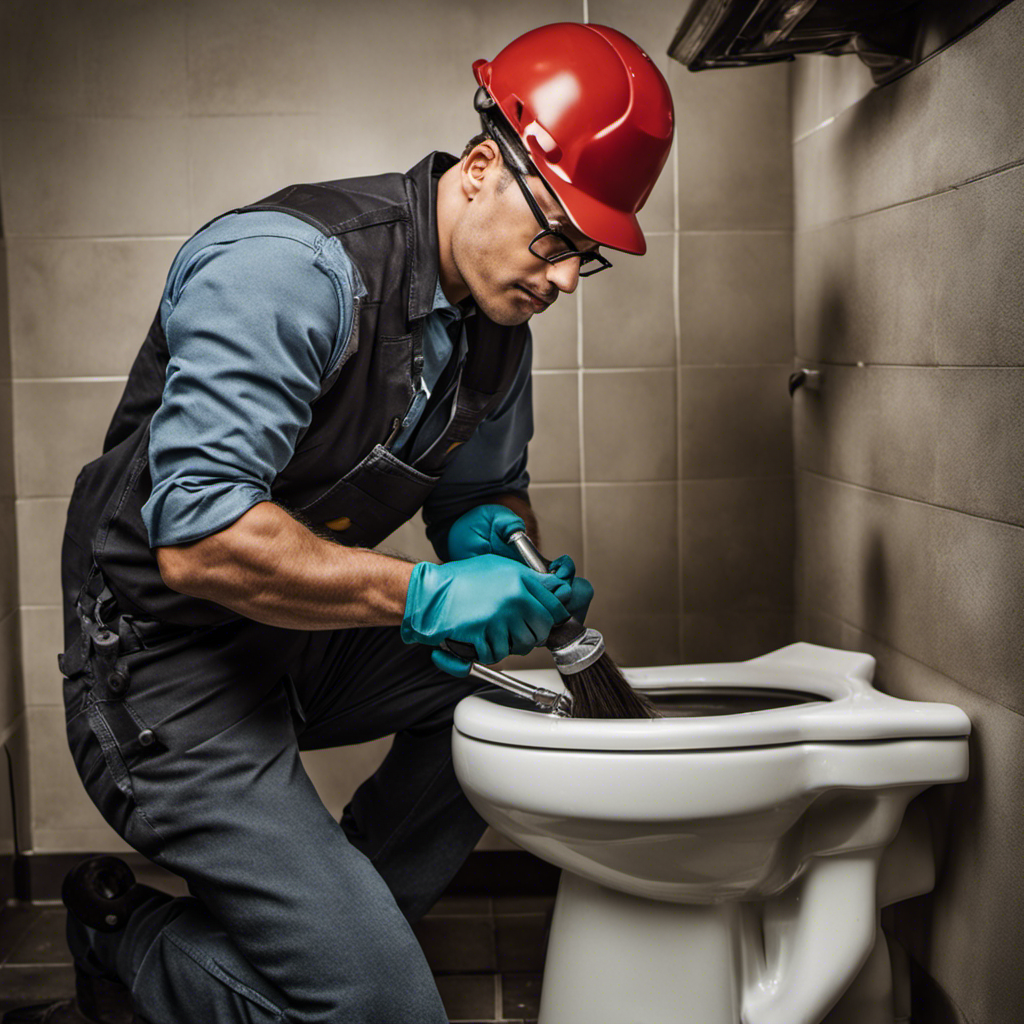Are you tired of dealing with litter boxes and the mess they create? Well, look no further!
In this article, we will guide you through the process of teaching your cat to use the toilet. Yes, you heard that right – your feline friend can actually use the toilet!
With our expert tips and step-by-step instructions, you’ll be amazed at how quickly your cat can become a toilet-trained superstar.
So, roll up your sleeves and get ready to bid farewell to those pesky litter boxes!
Key Takeaways
- Clear out the bathroom and provide a familiar spot for your cat to eliminate while gradually moving the litter box closer to the toilet.
- Use positive reinforcement, such as treats or praise, to encourage progress and associate using the litter box with something positive.
- Gradually transition from using a litter box to raising it onto a platform next to the toilet, helping your cat become familiar with the height and positioning of the toilet.
- Use a training toilet seat or attachment to provide a stable surface for your cat to balance on, gradually removing the training tool to build their balance and rewarding them for successful balancing.
Step 1: Preparing the Toilet Training Area
First, you’ll need to start by clearing out the bathroom and putting a litter box next to the toilet. This step is crucial in preparing the training area for your cat.
By removing any distractions and providing a familiar spot for your cat to eliminate, you are setting the stage for successful toilet training. Make sure to place the litter box next to the toilet so that your cat can easily transition from using the litter box to using the toilet.
As you progress in the training, you can gradually move the litter box closer to the toilet until it is eventually inside the toilet bowl.
It’s important to remember to reward and incentivize your cat during this process. Positive reinforcement, such as treats or praise, will encourage your cat’s training progress.
With consistent effort and patience, your cat will soon be ready for the next step: introducing them to the toilet.
Step 2: Introducing Your Cat to the Toilet
Next, you’ll want to slowly acclimate them to the toilet by placing a small litter box nearby. This will help your cat get used to the idea of using the bathroom in that area.
Here are some tips to make this transition smoother:
-
Use scented attractants: Sprinkle a small amount of cat litter or a few drops of a scented attractant in the litter box. This will help attract your cat to the box and encourage them to use it.
-
Introduce rewards: Whenever your cat uses the litter box, reward them with treats or praise. This positive reinforcement will associate using the box with something positive, making them more likely to continue using it.
By following these steps, you are setting the foundation for successful toilet training.
Now, let’s move on to step 3: the gradual transition from the litter box to the toilet.
Step 3: Gradual Transition From Litter Box to Toilet
To make the transition from the litter box to the toilet easier, start by gradually raising the litter box onto a platform over time. This gradual transition is important because it helps your cat get used to the change and reduces any challenges they may face during the process.
By raising the litter box onto a platform, you are helping your cat become familiar with the height and positioning of the toilet. It’s important to take safety precautions during this transition. Make sure the platform is stable and secure, and keep an eye on your cat to ensure they feel comfortable and confident using the higher litter box.
With patience and consistency, your cat will soon be ready to take the next step in their toilet training journey.
Step 4: Teaching Your Cat to Balance on the Toilet Seat
Now that your cat has successfully transitioned to using the toilet, it’s time to focus on teaching them to balance on the toilet seat. This step is crucial as it will help your cat feel secure and confident while using the toilet.
To achieve this, you can use a training toilet seat or a specially designed cat toilet seat attachment. It’s important to keep in mind the safety precautions while training, such as ensuring the stability of the seat and supervising your cat during the training process.
Training Toilet Seat Balance
Once your cat gets comfortable with the toilet seat, it’s time to start training them to balance on it. Here are some tips to help you with this step in your cat’s toilet training progress:
-
Use a toilet training tool, such as a specially designed seat or a training disc, to provide a stable surface for your cat to balance on.
-
Gradually increase the difficulty level by removing the training tool in small increments, allowing your cat to adjust and build their balance over time.
-
Reward your cat with treats and praise whenever they successfully balance on the toilet seat, reinforcing positive behavior.
-
Be patient and consistent in your training sessions, as it may take some time for your cat to fully master the skill of balancing on the seat.
By following these tips and using appropriate toilet training tools, you can help your cat build their confidence and progress further in their toilet training journey.
Now, let’s move on to the next step: building your cat’s confidence.
Building Cat’s Confidence
Building your cat’s confidence can be achieved by gradually increasing the difficulty level of their training sessions. Start with simple tasks that your cat is already familiar with, and slowly introduce new challenges. This will help them build trust in their abilities and in you as their trainer.
Positive reinforcement is key in this process. Reward your cat with treats, praise, and affection every time they successfully complete a task. This will reinforce their confidence and encourage them to continue trying new things. By using positive reinforcement, you are creating a positive association with the training sessions, which will further enhance your cat’s confidence.
As you continue to build their confidence, it is important to also consider safety precautions while training.
Safety Precautions While Training
To ensure your safety and your cat’s safety during training, make sure to create a secure and distraction-free environment. Here are some tips for preventing accidents during the training process:
- Start slow and be patient with your cat’s progress.
- Gradually introduce the litter box or toilet training device to your cat.
- Monitor your cat’s behavior and provide frequent opportunities for them to use the toilet.
- Clean accidents promptly and thoroughly to prevent any lingering smells.
The importance of positive reinforcement in toilet training:
- Reward your cat with treats or praise when they successfully use the toilet.
- Use positive reinforcement techniques to encourage your cat’s desired behavior.
- Avoid punishment or scolding, as it can create fear and hinder the training process.
Step 5: Encouraging Your Cat to Use the Toilet
Encourage your cat to use the toilet by slowly transitioning them from the litter box to the toilet seat.
To effectively teach your cat this new behavior, it is important to employ various encouragement techniques and reward their progress along the way.
Start by placing the litter box next to the toilet, gradually elevating it until it is level with the seat. This will help your cat associate the toilet with their usual elimination spot.
Once the litter box is on the toilet, gradually reduce the amount of litter used, until eventually, there is none left. Remember to praise your cat and offer treats whenever they successfully use the toilet.
By positively reinforcing their behavior, you are motivating them to continue using the toilet. With consistent practice and patience, your cat will soon become accustomed to this new routine.
Now, let’s move on to step 6: troubleshooting common toilet training challenges.
Step 6: Troubleshooting Common Toilet Training Challenges
Now, let’s tackle some common challenges you may encounter while training your feline friend to use the toilet. Toilet training your cat can be a rewarding experience, but it’s not without its hurdles.
Here are some troubleshooting tips to help you overcome these common challenges:
-
Litter box aversion:
-
Ensure the litter box is clean and accessible.
-
Gradually transition from the litter box to the toilet by using a litter box insert for the toilet seat.
-
Accidents outside the toilet:
-
Clean accidents thoroughly to remove any lingering odors.
-
Use positive reinforcement and rewards when your cat successfully uses the toilet.
Conclusion
Congratulations! You’re now equipped with the knowledge and tools to successfully teach your feline friend the art of using the toilet.
With patience, consistency, and a bit of trial and error, you can transform your cat into a sophisticated bathroom user.
Remember, accidents may happen along the way, but don’t let that discourage you. Stay committed to the process.
Soon enough, your furry companion will be relieving themselves like a true toilet connoisseur.
Happy toilet training!










